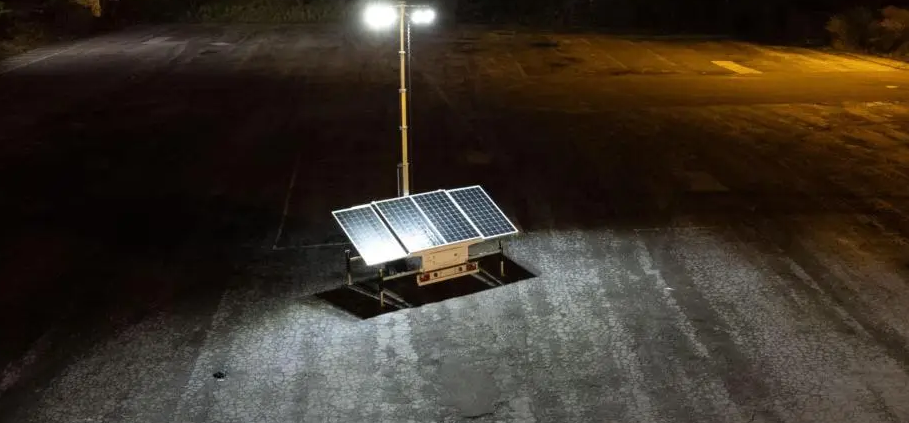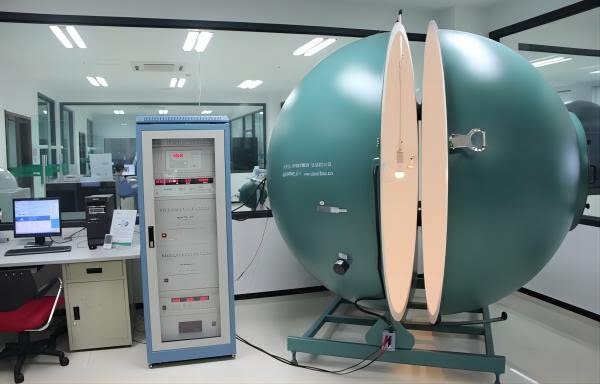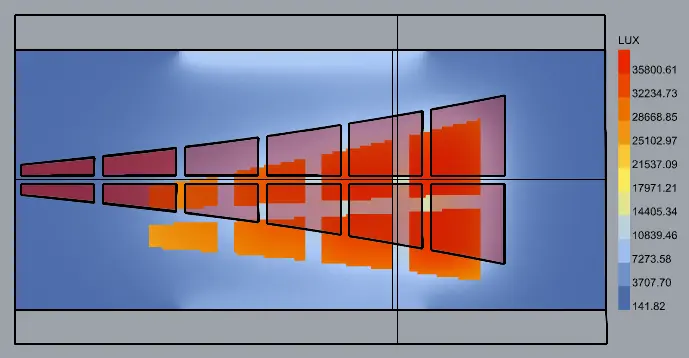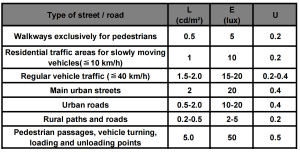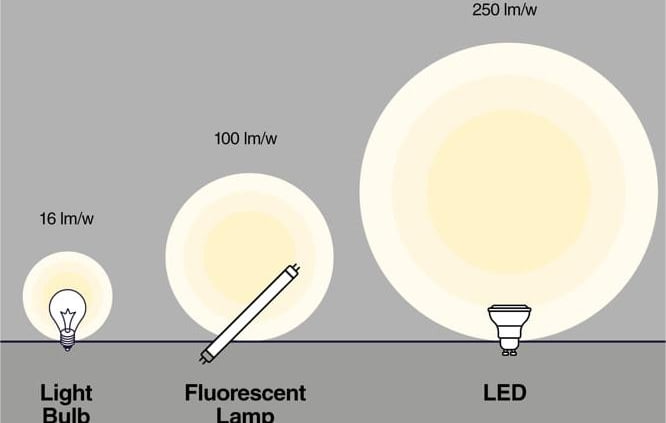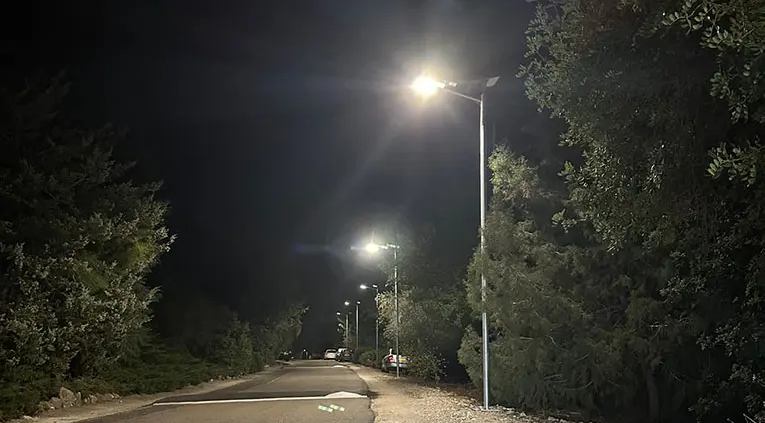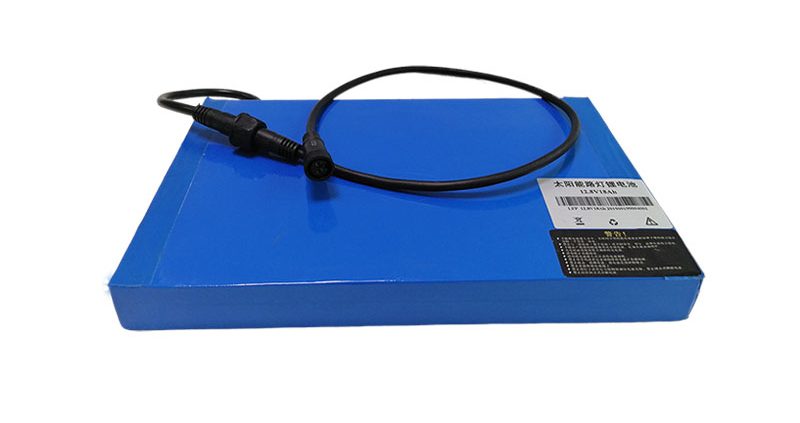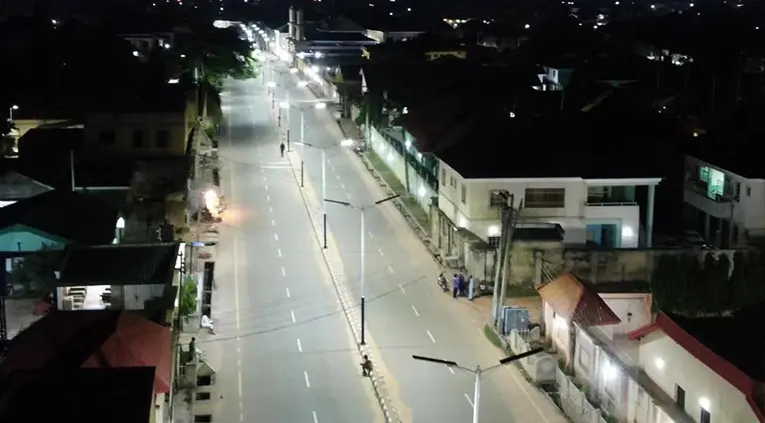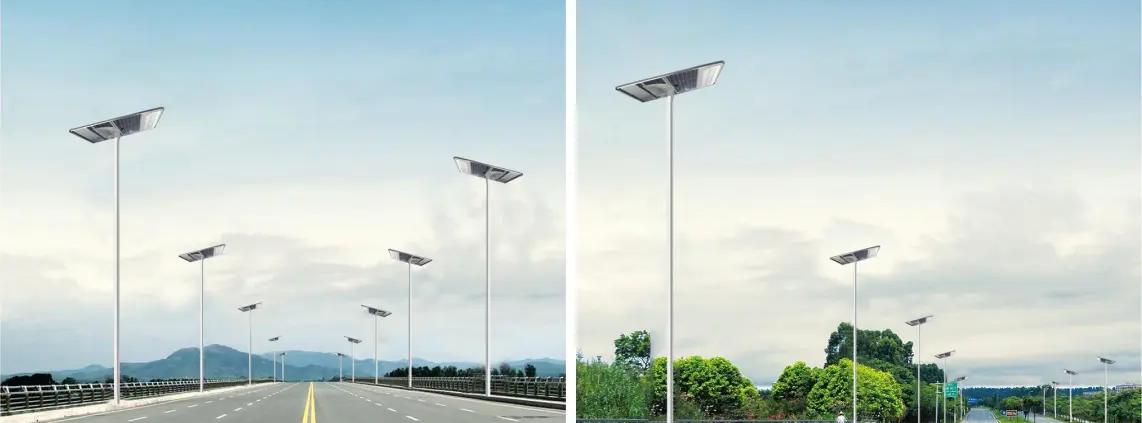قياس الضوء لأنظمة إضاءة الشوارع بالطاقة الشمسية
تحتوي مصابيح الشوارع بالطاقة الشمسية على ثلاثة مقاييس سطوع مهمة: الشمعة، واللوكس، واللومينز.
- شمعة تمثل كمية الضوء الناتج.
- لوكس يمثل التدفق الضوئي لكل وحدة مساحة.
- كانديلا يمثل شدة مضيئة في اتجاه معين.
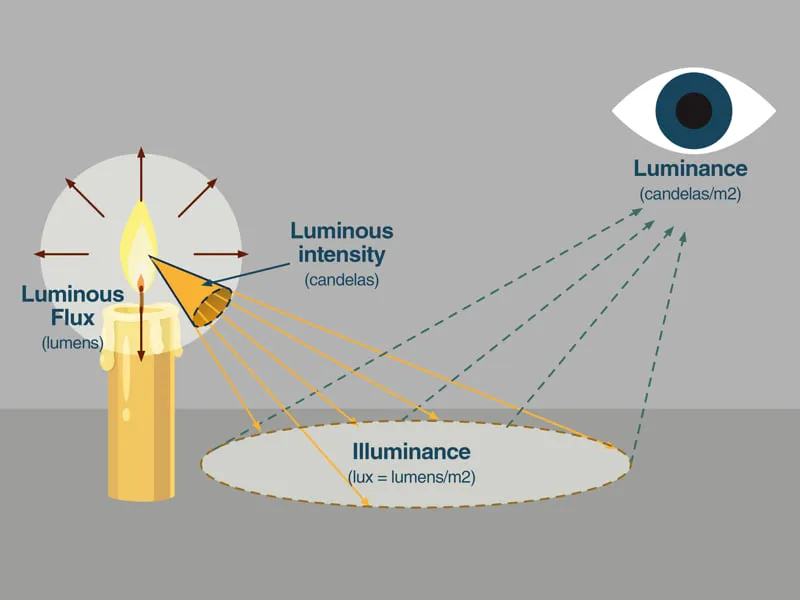
طرق قياس السطوع وشدة الإضاءة والإضاءة
شمعة: يتم قياس قيم التجويف باستخدام مجال متكامل. عادةً ما يتم تحديد قيمة اللومن لوحدة الإنارة على عبوة المنتج، مما يسمح للمشترين بتقييم سطوع وحدة الإنارة بشكل مباشر استنادًا إلى قيمة اللومن.
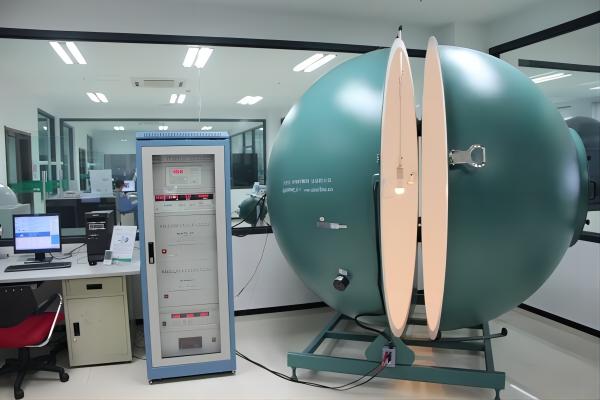
لوكس: يتم قياس اللوكس باستخدام مقياس اللوكس.
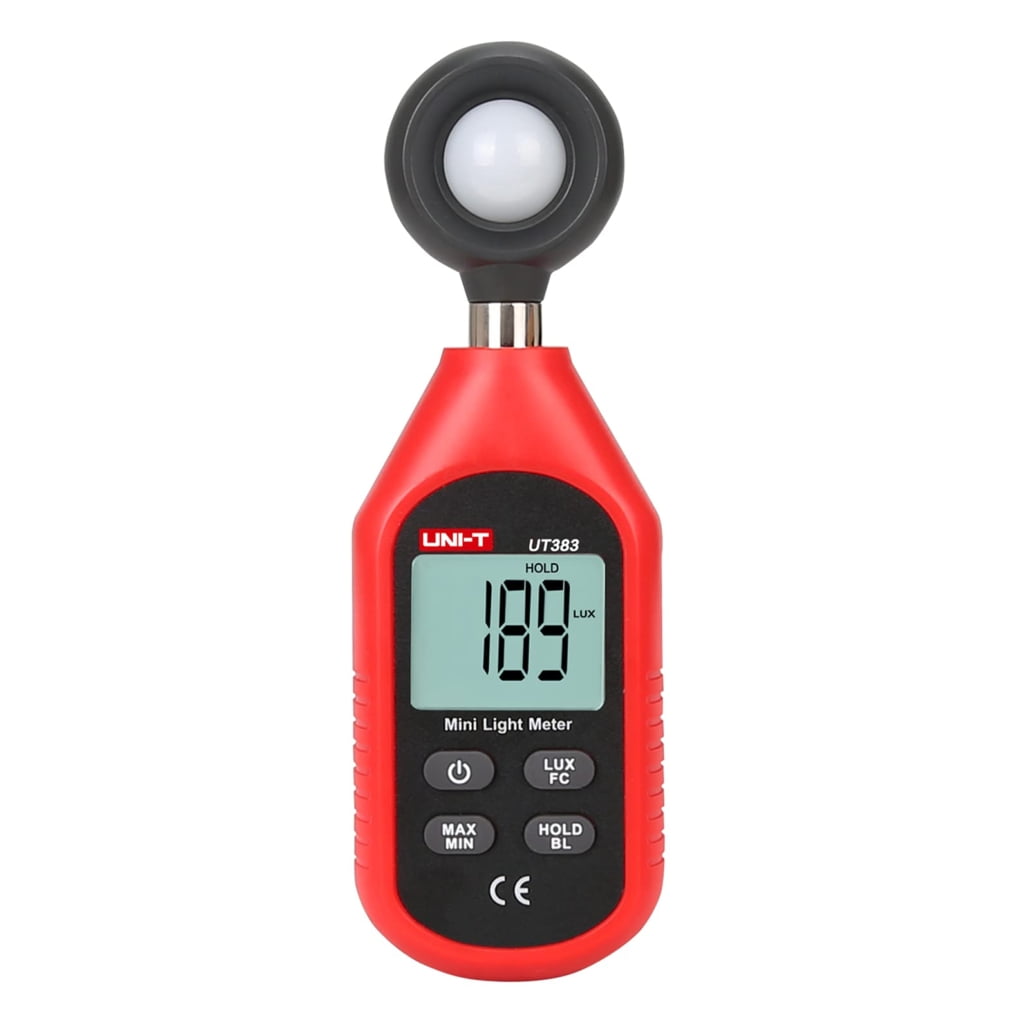
كانديلا: لإجراء قياسات بسيطة، يمكن استخدام مقياس ضوئي محمول. ومع ذلك، بالنسبة للمشاريع الهندسية، يلزم وجود مقياس إشعاع احترافي كبير لإنشاء تقرير كامل.
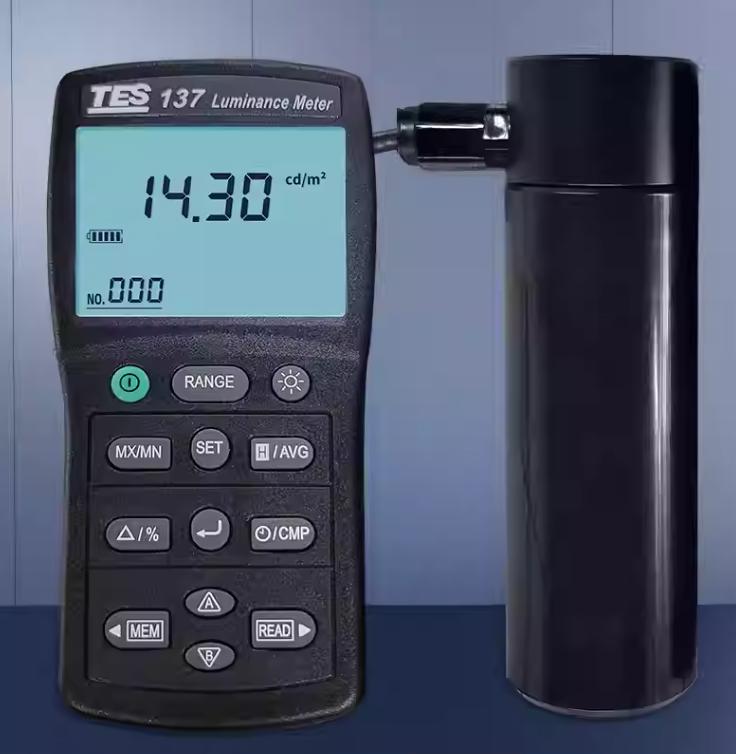
وفيما يلي جدول يلخص النقاط الرئيسية:
| قياس | تعريف | طريقة القياس |
|---|---|---|
| شمعة | إجمالي كمية الضوء المنبعثة | دمج المجال |
| لوكس | التدفق الضوئي لكل وحدة مساحة | لوكس متر |
| كانديلا | شدة الإضاءة في اتجاه معين | مقياس الضوء (قياسات بسيطة) أو مقياس الإشعاع (المشاريع الهندسية) |
أضواء الشوارع بالطاقة الشمسية مستوى لوكس. ما هو مستوى لوكس الذي أحتاجه؟
قياس الضوء لأنظمة إنارة الشوارع بالطاقة الشمسية
هناك نوعان من المؤشرات الهامة لسطوع ضوء الشارع بالطاقة الشمسيةولوكس ولومن.
اللوكس واللومينز هما وحدتان لقياس السطوع. يتم استخدامها لإخبارنا بمقدار مخرجات الإضاءة وسطوع الضوء الساقط على سطح معين.
اللومن يساوي ناتج الضوء.
لوكس (ممثلة بـ lx) تعني التدفق الضوئي لكل وحدة مساحة.
العلاقة بين شمعة ولوكس:اللوكس الواحد يساوي لومن واحد لكل متر مربع (lm/m2).
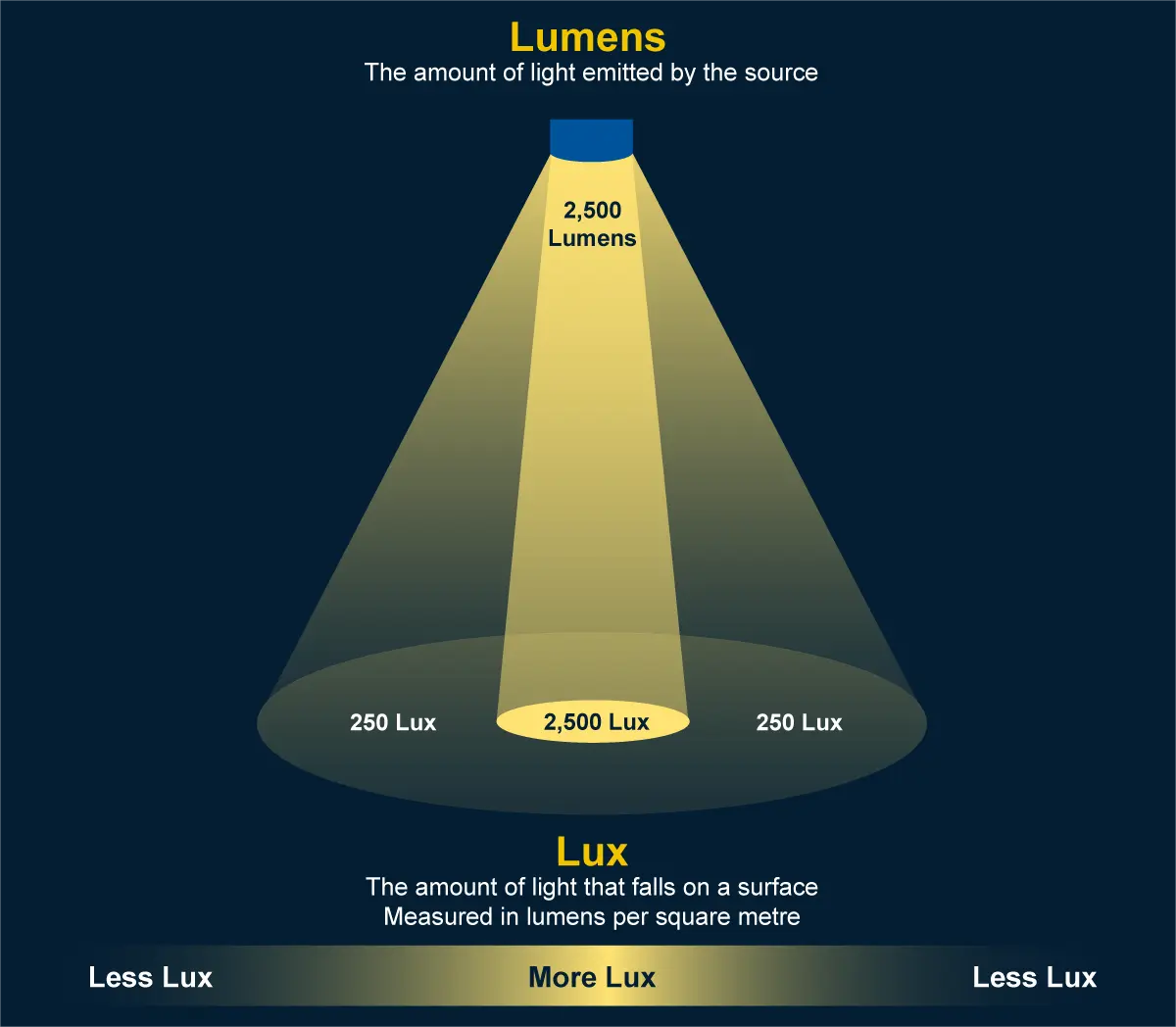 في هذا المقال، سوف نستكشف معايير لوكس لأضواء الشوارع وسبب أهميتها. إذا كنت تريد التعرف على اللومن يمكنك مراجعة هذه المقالة:فهم وحدات الوات واللومن: كيفية اختيار وحدة الإضاءة ذات السطوع المناسب لمشروعك
في هذا المقال، سوف نستكشف معايير لوكس لأضواء الشوارع وسبب أهميتها. إذا كنت تريد التعرف على اللومن يمكنك مراجعة هذه المقالة:فهم وحدات الوات واللومن: كيفية اختيار وحدة الإضاءة ذات السطوع المناسب لمشروعك
ما هو لوكس ولماذا هو مهم؟
لوكس هو قياس تدفق الضوء الساقط على السطح. لوكس هي الوحدة الدولية لقياس الضوء، وهي طريقة لقياس شدة الضوء. يستخدم لوكس لتحديد سطوع الضوء أو الإضاءة. إنه قياس قياسي للضوء لجميع أنواع الإضاءة، مثل الأضواء المنزلية، أو أضواء المكاتب، أو المصابيح الأمامية للسيارات، أو أضواء الشوارع.
لماذا يكون مستوى لوكس أكثر منطقية من التجويف؟
اللومن يقيس خرج الضوء من مصدر ضوء واحد. تتمثل طريقة حساب قياس اللومن في ضرب القوة الكهربائية لمصدر الضوء في اللومن المقدر لكل واط لمصدر الضوء.
لوكس هو مقدار الضوء الموجود على السطح. ويمكن قياس سطوع الضوء بعد أن يسافر مسافة معينة.
بالإضافة إلى النصوع، فإن مستويات لوكس هي أفضل طريقة لقياس سطوع أضواء الشوارع الشمسية. يمكن إجراء قياس الإضاءة بسهولة باستخدام مقياس الإضاءة فقط، بينما يتطلب قياس النصوع معدات متخصصة ويكون تنفيذه أكثر صعوبة.
الآن، عندما يكون لديك مصباح إضاءة للشارع بالطاقة الشمسية ينتج 1000 لومن، سيكون سطوعه مختلفًا إذا تم وضعه على بعد 10 أمتار. ولذلك، فإن تغيير موضع المصباح سيؤدي إلى تغيير السطوع تحت مستويات لوكس مختلفة. اللومن يقيس كمية الضوء التي ينتجها المصباح؛ يقيس لوكس المسافة التي ينتشر بها الضوء.
مستويات لوكس مختلفة لإنارة الشوارع بالطاقة الشمسية
وفقًا للمعايير المحددة في الوثائق الحكومية لبعض البلدان، فإننا نقدم التوصيات التالية كمرجع:
مستويات لوكس لإضاءة الطرق السريعة

الطرق السريعة من الدرجة الأولى والطرق السريعة من الدرجة الثانية: الحد الأدنى لمتوسط قيمة صيانة الإضاءة 20 lx (قياسي منخفض) / 30 lx (قياسي مرتفع)، الحد الأدنى لقيمة التوحيد 0.4؛
الطرق السريعة من الدرجة الثالثة: الحد الأدنى لمتوسط قيمة صيانة الإضاءة 15 lx (مستوى منخفض) / 20 lx (مستوى عالٍ)، انتظام 0.4؛
طرق الدرجة الرابعة: متوسط الإضاءة 10 لكس (مستوى منخفض) / 15 لكس (مستوى عال)، انتظام 0.3؛
تنطبق متطلبات الإضاءة المذكورة أعلاه فقط على الطرق الإسفلتية، ويمكن تقليل متطلبات الإضاءة للطرق الخرسانية بشكل مماثل، مع تخفيض لا يزيد عن 30%.
يجب تحديد مستويات إضاءة الطرق السريعة بناءً على معايير الإضاءة للطرق الحضرية المرتبطة بها، ونظام التحكم في حركة المرور على الطرق السريعة، ومرافق تقسيم الطرق.
إن الإضاءة المتوسطة المذكورة أعلاه لها قيمتان قياسيتان، ويجب استخدام قيم قياسية عالية للحالات التالية:
- متصلة بالطرق الحضرية بمعايير الإضاءة عالية الجودة؛
- ظروف الرؤية السيئة
- عدم كفاية أنظمة التحكم في حركة المرور على الطرق السريعة ومرافق تقسيم الطرق.
عند توصيلها بالطرق الحضرية ذات معايير الإضاءة المنخفضة، والرؤية الجيدة، وأنظمة التحكم في حركة المرور على الطرق السريعة ومرافق تقسيم الطرق، يجب استخدام قيم منخفضة الجودة لإضاءة الطرق السريعة.
إنارة الطرق الحضرية بمستويات لوكس

الطرق السريعة والطرق الرئيسية: الحد الأدنى لمتوسط قيمة صيانة الإضاءة 20 lx (مستوى منخفض) / 30 lx (مستوى عالٍ)، الحد الأدنى لقيمة التوحيد 0.4؛
الطرق الثانوية: الحد الأدنى لمتوسط قيمة صيانة الإضاءة 15 lx (مستوى منخفض) / 20 lx (مستوى عالٍ)، انتظام 0.4؛
الطرق الجانبية: متوسط الإضاءة 10 لكس (قياسي منخفض) / 15 لكس (قياسي مرتفع)، انتظام 0.3؛
تنطبق متطلبات الإضاءة المذكورة أعلاه فقط على الطرق الإسفلتية، ويمكن تقليل متطلبات الإضاءة للطرق الخرسانية وفقًا لذلك، مع تقليل لا يزيد عن 30%؛
يجب تحديد قيم إضاءة طريق المدينة بناءً على المنطقة التي يقع فيها المشروع، وموقع الطريق، وتدفق حركة المرور، ومرافق تقسيم الطريق، وظروف السطوع البيئي، والاحتياجات الفعلية.
يجب استخدام القيم القياسية العالية للشروط التالية:
- المدن والمناطق المركزية، أو الطرق الرئيسية المؤدية إلى المباني والأماكن العامة الكبيرة في المدينة؛
- المناطق التجارية المركزية أو الشرايين الرئيسية للمدينة؛
- الطرق ذات السطوع البيئي العالي؛
- الطرق الرئيسية للأشخاص الذين يدخلون ويخرجون من المناطق مثل المدارس والمستشفيات ودور رعاية المسنين؛
- الطرق التي تعاني من عدم كفاية مرافق تقسيم الطرق، وحركة المرور المختلطة للمركبات الآلية وغير الآلية والمشاة.
يوصى بالقيم القياسية المنخفضة للشروط التالية:
- الطرق القريبة من المناطق السكنية والمناطق الترفيهية.
- المناطق ذات السطوع البيئي المنخفض.
إنارة الطرق الريفية بمستويات لوكس
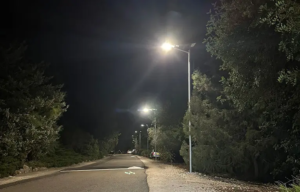
الطرق الأولية: الحد الأدنى لمتوسط قيمة صيانة الإضاءة 10 lx (مستوى منخفض) / 15 lx (مستوى عالٍ)، الحد الأدنى لقيمة التوحيد 0.3؛
الشوارع والممرات الجانبية: الحد الأدنى لمتوسط قيمة صيانة الإضاءة 5 lx (مستوى منخفض) / 8 lx (مستوى عالٍ)؛
ساحات النشاط العام: الحد الأدنى لمتوسط قيمة صيانة الإضاءة 10 lx (مستوى منخفض) / 15 lx (مستوى عالٍ)؛
تنطبق متطلبات الإضاءة المذكورة أعلاه فقط على الطرق الإسفلتية، ويمكن تقليل متطلبات الإضاءة للطرق الخرسانية وفقًا لذلك، مع تقليل لا يزيد عن 30%؛
يجب تحديد قيم إضاءة إضاءة الطرق الريفية بناءً على المنطقة التي يقع فيها المشروع، وتحديد موقع الطريق، وتدفق حركة المرور، ومرافق تقسيم الطريق، وظروف السطوع البيئي، والاحتياجات الفعلية.
يجب استخدام القيم القياسية العالية للشروط التالية:
- الطرق ذات التدفق المروري العالي بالقرب من المدن؛
- الطرق الريفية الكبيرة ذات الأنشطة التجارية الكثيفة؛
- الطرق ذات السطوع البيئي العالي؛
- الطرق التي تعاني من عدم كفاية مرافق تقسيم الطرق، وحركة المرور المختلطة للمركبات الآلية وغير الآلية والمشاة
يوصى بالقيم القياسية المنخفضة للشروط التالية:
- الطرق الريفية في المناطق النائية؛
- الطرق داخل القرى التي لا تمر عبرها السيارات؛
- المناطق ذات السطوع البيئي المنخفض.
منطقة تقاطع مستويات لوكس للسيارات
- تقاطع الدرجة 1 مع الدرجة 1، والدرجة 2، والدرجة 3: الحد الأدنى لمتوسط قيمة صيانة الإضاءة 30 lx (مستوى منخفض) / 50 lx (مستوى عالٍ)، وقيمة صيانة التجانس 0.4؛
- تقاطع الدرجة 2 مع الدرجة 2، الدرجة 3: الحد الأدنى لمتوسط قيمة صيانة الإضاءة 20 lx (مستوى منخفض) / 30 lx (مستوى عالٍ)، انتظام 0.4؛
- تقاطع الدرجة 3 مع الدرجة 3: الحد الأدنى لمتوسط قيمة صيانة الإضاءة هو 15 lx (مستوى منخفض) / 20 lx (مستوى عالٍ)، انتظام 0.4؛
عندما تكون معايير الإضاءة في الطرق المتقاطعة ذات قيم إضاءة قياسية منخفضة، يجب أن تتبنى منطقة التقاطع القيمة القياسية المنخفضة، وإلا فيجب استخدام القيمة القياسية العالية.
إضاءة جسر المشاة بمعايير لوكس
- بالنسبة لجسور المشاة ذات التدفق البشري المرتفع في المناطق الريفية وانخفاض التدفق البشري في المدن: متوسط الإضاءة 5lx على سطح الجسر، ومتوسط الإضاءة > 6lx على مسار السلم؛
- بالنسبة لجسور المشاة ذات التدفق البشري العالي في المدن: متوسط الإضاءة 10lx على سطح الجسر، ومتوسط الإضاءة > 12lx على مسار السلم؛
- بالنسبة لجسور المشاة شبه المغلقة: متوسط إضاءة 30lx على سطح الجسر، ومتوسط إضاءة أكبر من 36lx على مسار السلم؛
اتصل بنا للحصول على تصميم هندسي مجاني لإضاءة الشوارع
اختيار درجة حرارة اللون المناسبة CCT لمشروع إضاءة الشوارع بالطاقة الشمسية
فهم درجة حرارة اللون لإضاءة الشوارع بالطاقة الشمسية ( CCT ): كلفن
يستخدم كلفن عادة لقياس درجة حرارة اللون لمصدر الضوء. يعتمد مبدأ درجة حرارة اللون على خصائص توزيع التردد للضوء المنبعث من مشعاع الجسم الأسود عند درجة حرارته. تظهر درجات حرارة الجسم الأسود التي تقل عن 4000 كلفن باللون الأحمر، بينما تظهر درجات الحرارة الأعلى من 4000 كلفن باللون الأزرق، مع ظهور 7500 كلفن باللون الأزرق.
بشكل عام، تتراوح درجة حرارة كلفن للمصباح بين 2000 كلفن و6500 كلفن.

درجات حرارة كلفن أقل من 3000 تنتج ضوءًا دافئًا وهادئًا وجذابًا، ومناسبًا للإضاءة الداخلية العامة في المنازل والشركات. الايجابيات: الضوء الأصفر ذو الطول الموجي الأقصر لديه اختراق قوي في الأيام الممطرة. السلبيات: انخفاض الرؤية.
تسمى مصابيح LED في نطاق 3000K-4500K بالضوء المحايد. هذه الأضواء الساطعة والنابضة بالحياة مناسبة جدًا لأماكن العمل مثل الطوابق السفلية والمصانع والمستشفيات. الإيجابيات: 4000-4500 كلفن هي الأقرب إلى الضوء الطبيعي، والضوء أكثر نعومة ويمكن أن يوفر سطوعًا أعلى مع الحفاظ على انتباه السائق. السلبيات: ليست بمستوى رؤية أعلى من 5000 ألف.
تسمى الأضواء التي تتراوح درجات حرارة كلفن فيها بين 4500 كلفن و6500 كلفن الضوء الأبيض البارد، مما ينتج لونًا جديدًا مشابهًا لأشعة الشمس. تكون هذه المصابيح هي الأفضل عندما تكون هناك حاجة إلى أقصى قدر من الإضاءة، مثل إضاءة السلامة وخزائن العرض والمستودعات والمناطق الصناعية. الرؤية الأعلى تقلل من الحوادث، خاصة تلك التي تزيد عن 5700 ألف، وهي شائعة في المشاريع الهندسية. السلبيات: يمكن أن يسبب التعب ويجب عدم استخدامه في أماكن العمل طويلة المدى.
معايير CCT لإضاءة الشوارع بالطاقة الشمسية
في معظم البلدان، أربعة خيارات شائعة لدرجة حرارة اللون لمصابيح LED هي 2700 كلفن (بعض الشركات المصنعة تكتبها على أنها 3000 كلفن)، 3000 كلفن، 3500 كلفن، 4000 كلفن، 5700 كلفن (بعض الشركات المصنعة تكتبها على أنها 6000 كلفن)، مع تخصيص درجات حرارة الألوان الأخرى.
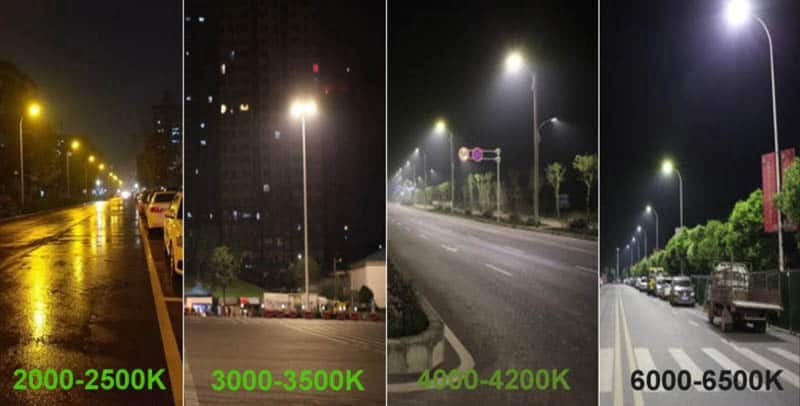
إنارة الطرق درجة حرارة اللون نطاقات الإضاءة
إنارة الطرق السريعة CCT
تحدد لوائح بعض البلدان (مثل الصين) أن درجة حرارة اللون يجب ألا تتجاوز 5000 كلفن، ويفضل اختيار درجة حرارة لون متوسطة إلى منخفضة. ومع ذلك، لا تزال العديد من المشاريع الهندسية في مختلف البلدان تختار 5700 كلفن أو حتى أكثر من 6000 كلفن لأن مزايا درجة حرارة اللون العالية مهمة أيضًا، مما يؤدي إلى تحسين الرؤية وتقليل الحوادث.
متطلبات درجة حرارة اللون لإضاءة طريق المطار
وفقًا للمعايير الفنية لمناطق الطيران المدني بالمطارات، عند استخدام LED كمصدر للضوء، يجب إضافة عدسة للتحكم في الوهج، ويجب ألا تتجاوز درجة حرارة اللون 4000 كلفن.
منطقة سكنية إنارة الطرق CCT
بالنسبة للطرق ذات حركة المرور المختلطة للمركبات والمشاة في المناطق السكنية، فمن المستحسن استخدام مصادر الضوء ذات درجات حرارة الألوان المنخفضة إلى المتوسطة، والتي تكون في الغالب أقل من 4000 كلفن.
متطلبات درجة حرارة اللون للطرق ذات المطر والضباب
يجب أن تستخدم الأضواء على طول الأنهار وأجزاء الطرق الضبابية مصابيح ذات درجة حرارة منخفضة، مع نطاق موصى به يتراوح بين 2700 كلفن و3500 كلفن.
إنارة طريق المنطقة التجارية درجة حرارة اللون
في المناطق التجارية المزدحمة، والمناطق التاريخية والثقافية، والمواقع ذات المناظر الخلابة، وغيرها من الأماكن التي يكون فيها التعرف على الألوان مهمًا لحركة مرور السيارات، يُنصح باستخدام مصادر ضوء CRI عالية، ومصادر إضاءة ذات درجة حرارة لون منخفضة إلى متوسطة.
ساحة انتظار السيارات إنارة الطرق CCT
5700-6500K هو الأفضل. يمكن أن تساعد درجة حرارة اللون التي تبلغ 5700 كلفن في تركيز الانتباه وجعل القيادة أكثر أمانًا.
متطلبات درجة حرارة اللون للحديقة والإضاءة الصناعية
الأضواء الكاشفة والأضواء الكاشفة الخارجية وغيرها من مصابيح المناظر الطبيعية المستخدمة في الحدائق وديكورات الطرق والإضاءة الجزئية وغيرها من المناطق الترفيهية الخارجية. بشكل عام، الألوان الدافئة 2700K و3000K هي أكثر ملاءمة، مما يخلق جوًا دافئًا ومريحًا.
فهم وحدات الوات واللومينز: كيفية اختيار وحدة إضاءة السطوع المناسبة لمشروعك
ماذا يعني واط في المصابيح الكهربائية؟
الواط (رمزه: W) هو وحدة قياس للقدرة، تقيس كمية الطاقة المستهلكة. عندما ندفع فاتورة الكهرباء، فإننا ندفع ثمن الواط الذي نستخدمه. وبما أننا استخدمنا تقليديًا المصابيح المتوهجة، فقد اعتدنا على استخدام الواط كوحدة للسطوع، لكن هذا غير صحيح. مقياس سطوع جهاز الإضاءة هو اللومن وليس الوات.

فهم شمعة
اللومن هو قياس الطاقة الضوئية المرئية. كلما زاد عدد اللومن، كلما كان الضوء أكثر سطوعًا. عادةً ما يتم تمييز تركيبات الإضاءة المستخدمة للإضاءة بمخرج الضوء الخاص بها (باللومن)، وهو أمر مطلوب قانونيًا في العديد من الولايات القضائية.
لذلك، عندما نختار سطوع المصباح، نحتاج فقط إلى البحث عن قيمة اللومن على العبوة.
افهم التحويل بين اللومن والواط للعثور على السطوع المناسب
إذا سأل أحد مقاولي الطرق عما إذا كان لدينا مصباح شارع يعمل بالطاقة الشمسية بقدرة 100 وات، فمن الصعب تحديد متطلبات عدد وحدات اللومن من مصابيح الشوارع LED بالطاقة الشمسية التي يحتاجون إليها. لفهم العلاقة بينهما بشكل واضح، نحن بحاجة إلى فهم فعالية الإضاءة (لومن لكل واط).
يشير هذا المقياس إلى مدى كفاءة مصدر الضوء في تحويل الطاقة (واط) إلى ضوء (لومن).
فعالية الإضاءة (lm/W) = اللومن (lm)/واط(W)
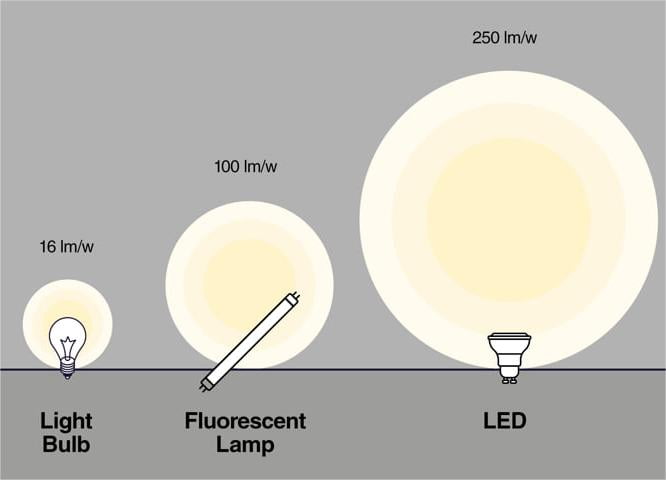
الكفاءة المضيئة للمصابيح المختلفة بنفس الوات
الكفاءة المضيئة للمصابيح المختلفة
استنادا إلى أ تقرير 2013 من موقع Energy.gov في الولايات المتحدة، هناك معايير حزمة LED تم تحديدها عند 266 لومن / واط وتحقق مصابيح PC-LED أكثر من 130 لومن / واط، مع توقع ناجح أنه بحلول عام 2024 ستتجاوز كفاءة الإضاءة لمصابيح LED 200 لومن / واط، مما يوضح أهمية و التوقعات لإضاءة LED المستقبلية.
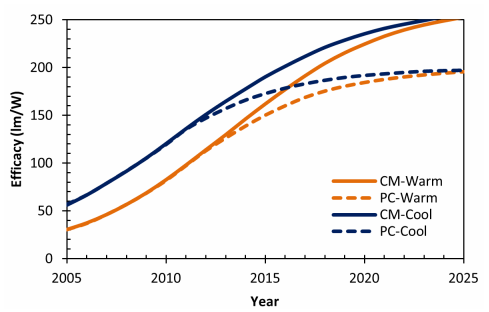
اعتبارًا من عام 2024، يمكن لتقنية LED بالفعل تحقيق معدل نظري قدره 230 لومن/وات (تم اختبار الاستخدام الفعلي عند 200 لومن/وات). نظرًا للاختلافات في المواصفات بين الشركات المصنعة وقضايا العرض والطلب في السوق، لا يزال هناك العديد من مصابيح LED في السوق تتراوح من 130 لومن/واط إلى 190 لومن/واط. لذلك، عند اختيار سطوع جهاز الإضاءة، من الضروري الانتباه إلى اللومن.
تنتج التكنولوجيا المتوهجة عادة 12-18 لومن لكل واط، في حين تنتج تكنولوجيا الهالوجين عادة 10-20 لومن لكل واط.
لذلك، بالنسبة لنفس القوة الكهربائية، يكون سطوع مصابيح LED حوالي 10-14 مرة من المصابيح المتوهجة وحوالي 10 مرات من مصابيح الهالوجين. يمكنك الرجوع تقريبًا إلى هذا المؤشر عند اختيار تركيبات الإضاءة.
تحويل التجويف إلى واط (في ضوء LED فعالية الإضاءة 130 لومن / واط)
| شمعة | واتس ساطعة | الهالوجين واتس | واتس ال اي دي |
| 100 | 7 | 6 | 0.77 |
| 375 | 25 | 20 | 2.9 |
| 450 | 30 | 25 | 3.5 |
| 800 | 60 | 45 | 6 |
| 1100 | 75 | 60 | 8.5 |
لومن إلى واط للدردشة (بكفاءة مضيئة مختلفة)
| لومن إلى واط | فعالية مضيئة (lm/W) | |||
| شمعة | 130 م/وات | 150 م/ث | 180 م/وات | 200 م/ث |
| 100 م | 0.8 واط | 0.7 واط | 0.6 واط | 0.5 واط |
| 500 م | 4 واط | 3 واط | 3 واط | 3 واط |
| 1000 م | 8 واط | 7 واط | 6 واط | 5 واط |
| 2000 م | 15 واط | 13 واط | 11 واط | 10 واط |
| 3000 م | 23 واط | 20 واط | 17 واط | 15 واط |
| 4000 م | 31 واط | 27 واط | 22 واط | 20 واط |
| 6000 م | 46 واط | 40 واط | 33 واط | 30 واط |
| 8000 م | 62 واط | 53 واط | 44 واط | 40 واط |
| 10000 م | 77 واط | 67 واط | 56 واط | 50 واط |
| 15000 م | 115 واط | 100 واط | 83 واط | 75 واط |
| 20000 م | 154 واط | 133 واط | 111 واط | 100 واط |
كيفية التحقق من موثوقية فعالية مضيئة
اعتمد على تقرير اختبار فعالية الإضاءة المقدم من الشركة المصنعة.
كيف أعرف عدد اللومن الذي أحتاجه؟
حاسبة التجويف
يمكنك استخدام حاسبة التجويف لتحديد ذلك، في https://www.omnicalculator.com/everyday-life/lighting
كم عدد شمعة اللازمة ل أضواء الشوارع في الهواء الطلق?
يعتمد عدد اللومن المطلوب لأضواء الشوارع على عدة عوامل، مثل ارتفاع عمود الإضاءة وعرض الطريق وكمية الإضاءة المحيطة المتوفرة. لتحديد خرج اللومن المناسب، يجب مراعاة مستويات الإضاءة الموصى بها لأنواع مختلفة من الطرق.
بشكل عام، تتطلب الشوارع السكنية حوالي 5000 إلى 12000 لومن لكل ضوء، بينما قد تتطلب الطرق الرئيسية والطرق السريعة مخرجات لومن أعلى، وتحتاج عادةً إلى 10000 إلى 15000 لومن لضمان السلامة.
المعايير المرجعية لارتفاع عمود إنارة الشوارع والتجويف
- ارتفاع 6 متر: 6000 لومن
- ارتفاع 8 متر: 8000 لومن
- ارتفاع 10 متر: 10000 لومن
- ارتفاع 12 متر: 12000 لومن
- ارتفاع 14 م: 15000 لومن
- ارتفاع 16 م: 18000 لومن
- ارتفاع 20 متر: 25000 لومن
للحصول على إرشادات حول كيفية اختيار ارتفاع عمود الإنارة يرجى مراجعة المقال:كيفية حساب ارتفاع ومسافة عمود إنارة الشوارع بالطاقة الشمسية؟
كم عدد وحدات اللومن اللازمة للبيئات الداخلية
- مساحة العمل أو المرآب: 8,000 إلى 10,000 لومن
- مناطق عمل المطبخ: 7000 إلى 8000 لومن
- الحمام: 7000 إلى 8000 لومن
- المكتب المنزلي: من 6,000 إلى 8,000 لومن
- غرفة الطعام: 3000 إلى 4000 لومن
- المطبخ: 3000 إلى 4000 لومن
- غرفة الطعام: 3000 إلى 4000 لومن
- غرفة المعيشة: 1000 إلى 2000 لومن
- غرفة النوم: 1000 إلى 2000 لومن
- المدخل: من 500 إلى 1000 لومن
هذه إرشادات عامة تنطبق على معظم المساحات؛ ومع ذلك، فقد لا تنطبق على كافة السيناريوهات. قد تتطلب الغرف ذات الجدران الداكنة والأسقف العالية بشكل خاص وحدات لومن إضافية لتحقيق التأثير المطلوب.
وأخيراً ننصحك بقراءة هذا المقال للتعرف على قياس الإضاءة لأنظمة إنارة الشوارع بالطاقة الشمسية:https://luxmanlight.com/are-solar-street-lights-bright-enough/
المصادر المرجعية
https://en.wikipedia.org/wiki/Lumen_(unit)
https://en.wikipedia.org/wiki/Watt
كم من الوقت تستمر المصابيح الشمسية؟ 6 نصائح لجعل المصابيح الشمسية تعيش لفترة أطول
كم من الوقت تستمر المصابيح الشمسية؟
وفقًا للنموذج السائد لعام 2024، عادةً ما يتم ضبط المصابيح الشمسية لتستمر في الإضاءة 12 تختفي من الغسق حتى الفجر. عمر الخدمة المصمم من 8 إلى 10 سنوات. كمحترف الشركة المصنعة لمصابيح الشوارع بالطاقة الشمسية، نستخدم الآن بطاريات فوسفات الحديد الليثيوم ومصابيح LED لإنتاج المصابيح الشمسية، مما يضمن إمكانية استخدامها لأكثر من 10 سنوات. قد تستخدم المصابيح الشمسية ذات الجودة المنخفضة بطاريات تدوم من 3 إلى 5 سنوات فقط، مما يؤدي إلى قصر مدة الإضاءة والحاجة إلى استبدال البطارية بشكل منتظم، وهو أمر غير ودي إلى حد كبير.
يوصي Luxman بشدة باستخدام مصابيح شمسية عالية الجودة ويوفر ضمانًا لمدة 5 سنوات. حتى أضواء الشوارع الشمسية في لوكسمان يمكنها الاستمرار في الإضاءة لمدة 12 ساعة يوميًا خلال سبعة أيام ممطرة متتالية.
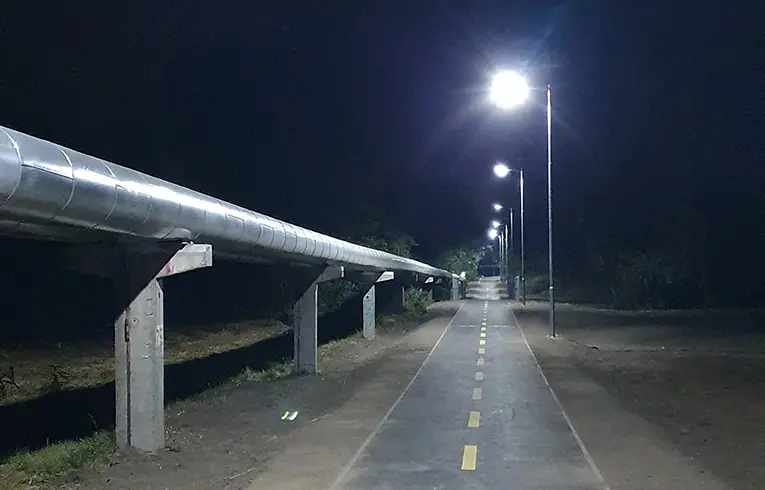
كيفية تمديد مدة إضاءة الأضواء الشمسية
الحفاظ على نظافة الألواح الشمسية
إذا كنت ترغب في الاستفادة الكاملة من الألواح الشمسية، فأنت بحاجة إلى تنظيفها بانتظام للتأكد من وصول ضوء الشمس إليها بسلاسة وأن البطاريات تتلقى ما يكفي من الطاقة. إذا كان التنظيف اليدوي يبدو مزعجًا للغاية، فيمكنك اختيار أو تخصيص المصابيح الشمسية من خلال التنظيف التلقائي، مما يضمن أداء الألواح الشمسية دائمًا في أفضل حالاتها.
التثبيت في المناطق المفتوحة
التأكد من تركيب المصابيح الشمسية في الأماكن التي يمكن أن تشرق عليها أشعة الشمس مباشرة، مما يضمن مدة الإضاءة الكافية.
الإعداد العلمي لأوضاع الإضاءة
يمكنك استخدام أوضاع استشعار الحركة PIR لضبط السطوع أو ضبط سطوع الإضاءة وفقًا لفترات زمنية مختلفة، مما يوفر المزيد من الطاقة لضمان إضاءة أطول.
باستخدام أضواء LED
تتميز مصابيح LED بتأثير إضاءة أكثر كفاءة، مما يوفر الطاقة.
وظائف الحماية المناسبة من الطقس والمناخ
يمكن تجهيز المصابيح الشمسية بوظائف التحكم في درجة الحرارة للتعامل مع الطقس البارد والحار للغاية. إذا لم تكن هذه الوظيفة متوفرة، فمن الأفضل شراء المصابيح الشمسية ذات الحماية من التآكل للمناطق الرطبة والمناطق الساحلية. تتمتع جميع مصابيح Luxman الشمسية بهذه الوظائف. إذا لم تكن المصابيح الشمسية الخاصة بك تحتوي على هذه الوظائف، فيرجى إحضارها إلى الداخل أثناء الطقس الجليدي في الشتاء.
استخدم بطاريات ليثيوم فوسفات الحديد (LiFePO₄)
يمكن أن تدور LiFePO₄ ما يصل إلى 3000 مرة وهي البطاريات الشمسية الأكثر مثالية.
التحديثات الأخيرة:
https://luxmanlight.com/what-battery-is-best-for-solar-street-lights-in-2024/
https://luxmanlight.com/what-is-the-best-solar-light-battery/
https://luxmanlight.com/how-long-do-solar-powered-street-light-last-luxman-light/
ما هي البطارية الأفضل لأضواء الشوارع بالطاقة الشمسية في عام 2024؟
NICD ليس خيارًا رئيسيًا للأضواء الشمسية
البلى والكادميوم لا تعد بطاريات (نيكل كادميوم) من أفضل خيارات البطاريات الشمسية المتوفرة في السوق للاستخدام في مصابيح الطاقة الشمسية. هناك جدل في "مجتمع البطاريات" حول ما يسمى "تأثير الذاكرة" مع NiCd - هذه الأنواع من البطاريات مصممة ليتم شحنها بالكامل واستنفادها بالكامل.
وهذا ليس ما يحدث غالبًا مع البطاريات المخصصة للأضواء الشمسية، حيث يوجد تفريغ شحن مستمر مع دورات النهار والليل. يعمل تأثير الذاكرة على تغيير مستويات جهد البطارية لتتقلص بمرور الوقت، حيث "تنسى" البطارية الارتفاعات والانخفاضات التي لا يتم شحنها عادةً. عادةً ما تقوم أفضل بطارية للأضواء الشمسية (مع نظام بحجم مناسب) بتفريغ حوالي 15% كل يوم.
بالإضافة إلى ذلك، الكادميوم هو معدن شديد السمية وهو ما يتعارض مع أحد أغراض المصابيح الشمسية - وهو تقليل التأثير البيئي الذي قد يحدثه استخدام الطاقة. العديد من بطاريات NiCd تحمل كلمة "POISON" مختومة على الجزء العلوي. نحن نعلم أن معظم مديري المشاريع يفضلون فقط شيئًا يوفر المال مع مرور الوقت، ولكن لماذا لا نتبع كلا الطريقين الفعالين من حيث التكلفة والآمنين بيئيًا؟
NIMH أقرب، ولكن لا يوجد سيجار
نيمه تعد تقنية (نيكل ميتال-هيدريد) خيارًا أفضل من بطاريات NiCd عندما يتعلق الأمر بالبيئة، ولكن لا تزال هناك بعض نقاط الضعف في هذا الاختيار. هناك الكثير من الصيانة المطلوبة مع بطاريات NiMH لأنها تحتاج إلى تفريغ كامل من وقت لآخر - نحن على يقين من أن شخصًا ما لا يرغب في الحصول على مهمة تفريغ كل بطارية في تكوين ضوء ساحة انتظار السيارات بالطاقة الشمسية.
أفضل تطبيق لهذه البطاريات هو للإلكترونيات الصغيرة مثل المصابيح الكهربائية والألعاب لأنها تعمل بشكل أفضل مع الاستهلاك العالي للطاقة والطلب بدلاً من مصارف الطاقة الدورية الصغيرة أو التطبيقات منخفضة الطاقة. لا يزال ليس أفضل حل للبطارية لأضواء الشوارع بالطاقة الشمسية.
بطارية الرصاص الحمضية
لوحة بطارية الرصاص الحمضية تتكون من الرصاص وأكسيد الرصاص، المنحل بالكهرباء لمحلول مائي حامض الكبريتيك. مزاياها الرئيسية هي استقرار الجهد والسعر المنخفض. العيب هو أن الطاقة المحددة منخفضة، مما يؤدي إلى حجم كبير نسبيًا وعمر خدمة قصير، حوالي 300-500 دورة عميقة، مما يتطلب صيانة روتينية متكررة. لا تزال البطارية تستخدم على نطاق واسع في صناعة مصابيح الشوارع بالطاقة الشمسية.

البطارية الغروية (بطارية هلامية)
في الواقع، بطارية الرصاص الحمضية هي ترقية للنسخة المجانية من الصيانة، من خلال المنحل بالكهرباء الغروية بدلاً من المنحل بالكهرباء حمض الكبريتيك، من حيث السلامة والتخزين وأداء التفريغ وعمر الخدمة تم تحسينها مقارنة بالبطاريات العادية، وسعر بعضها حتى أعلى من ثلاث بطاريات الليثيوم. يمكن استخدامه في نطاق درجات الحرارة من -40 درجة مئوية إلى -65 درجة مئوية، وخاصة الأداء الجيد في درجات الحرارة المنخفضة، ومناسب لمنطقة جبال الألب الشمالية. أداء زلزالي قوي، يمكن استخدامه بأمان في البيئات القاسية. عمر الخدمة حوالي ضعف عمر بطارية الرصاص الحمضية العادية.
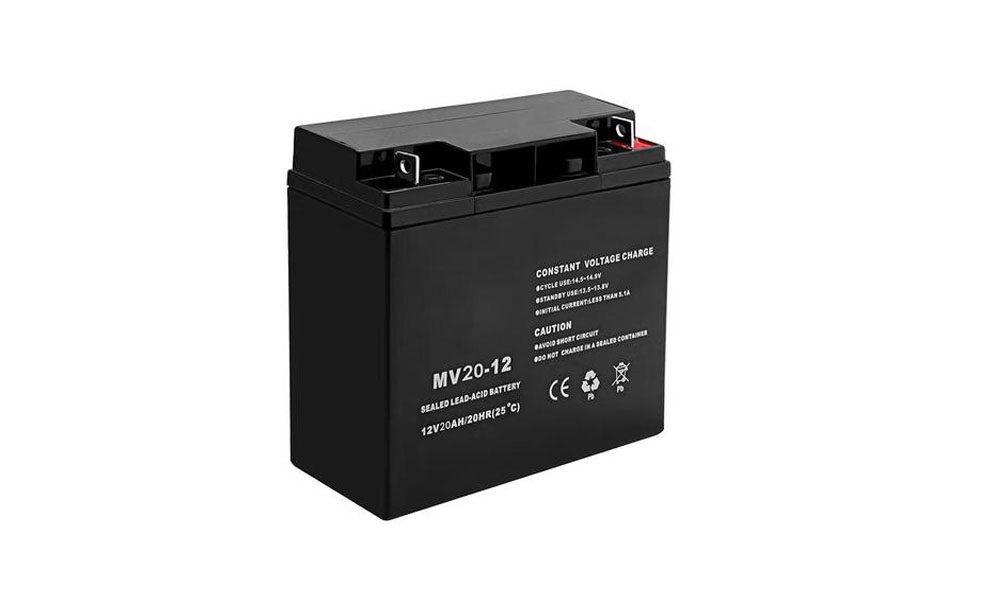
بطارية ليثيوم ثلاثية
أعلى من الطاقة، صغير الحجم، شحن سريع، لكن السعر أعلى. يبلغ عدد الدورات العميقة حوالي 500-800 مرة، وعمر البطارية أطول بحوالي 1 مرة من عمر بطارية الرصاص الحمضية، ويتراوح نطاق درجة الحرارة من -15 درجة مئوية إلى 45 درجة مئوية. ومع ذلك، فإن الشركات المصنعة الأقل استقرارًا وغير المؤهلة لبطاريات الليثيوم الثلاثية قد تنفجر أو تشتعل فيها النيران عند الشحن الزائد أو درجة الحرارة المرتفعة جدًا.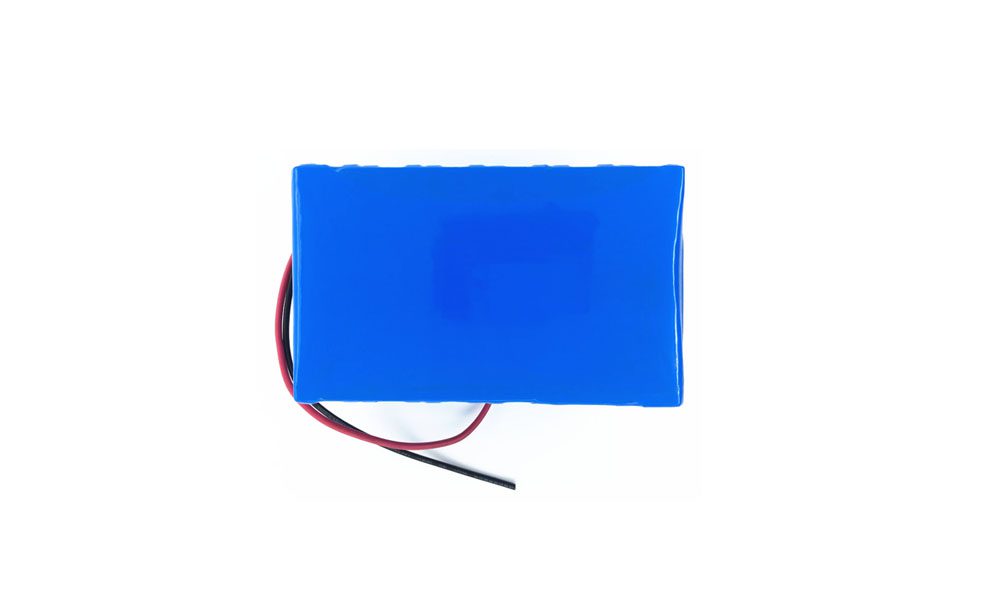
بطارية ليثيوم فوسفات الحديد (بطارية لايف بي او 4)
أعلى من الطاقة، وصغر الحجم، والشحن السريع، وعمر الخدمة الطويل، والاستقرار الجيد، والسعر هو الأعلى. يبلغ عدد الشحن بالدورة العميقة حوالي 1500-2000 مرة، وعمر خدمة طويل، يصل بشكل عام إلى 8-10 سنوات، واستقرار قوي، ونطاق درجة حرارة واسع، ويمكن استخدامه في -40 درجة مئوية إلى 70 درجة مئوية.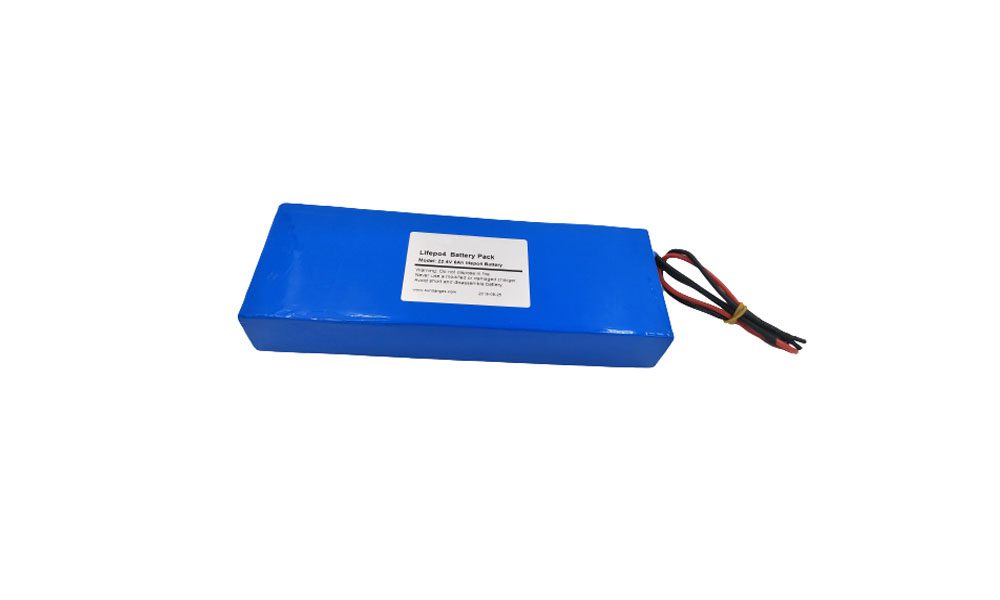
خلاصة القول، إن مصابيح الشوارع التي تعمل بالطاقة الشمسية تستخدم بالطبع بطاريات ليثيوم فوسفات الحديد بشكل أفضل، على الرغم من أن السعر أعلى. في الوقت الحاضر، يعتبر سعر مصباح الشارع الشمسي في السوق الذي يستخدم بطارية ليثيوم فوسفات الحديد منتجًا معقولًا جدًا، ويمكن أن يصل عمر هذا المنتج إلى 10 سنوات، والسعر أيضًا جذاب للغاية.
لوكسمان أضواء الشوارع الشمسية وجميعها مدعومة ببطاريات ليثيوم فوسفات الحديد.
https://luxmanlight.com/how-to-choose-the-right-batteries-for-your-solar-light/
https://luxmanlight.com/what-kind-of-batteries-are-used-in-solar-street-lights/

